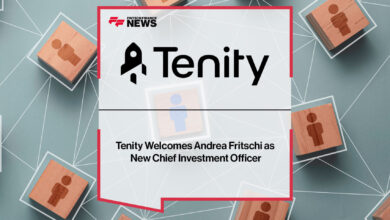Amdocs study shows increased personalization benefits

Results of Amdocs’ Personalization and Multigenerational Banking Survey show that the more customers know about the possibilities for personalization in banking, the more they want. It also shows a significant opportunity for multi-generational banking services through which financial institutions can drive customer loyalty. Amdocs interviewed 1,000 working-age adults in North America; 500 live in a household without children or seniors, 250 live with children under 21, and 250 live with adults over 65.
Global head of fintech solutions, Bentzi Aviv, said 82% were initially satisfied with the current personalization level at their bank, but that is a byproduct of people becoming accustomed to the usual menu of banking products. Ask a few more questions, and gaps appear.
- 38% have adequate resources to successfully plan for the future (31% of households with seniors);
- 68% have an interest in offerings that help them manage their multigenerational household now and in the future;
- 78% are interested in tailored financial planning tools;
- Between 72% and 84% of all household configurations want products to help build their financial futures;
And, that 82% begins to drop. Ask about knowledge of their and others’ finances, and one imagines the satisfaction percentage sinking further:
- 55% have zero visibility into elderly family members’ banking habits;
- 53% are interested in custom real-time recommendations generated by AI;
- 66% want to build better habits through tools that gamify personal finances.
Banks have the personalization advantage
Aviv cautioned that financial institutions aren’t starting from scratch. He argues personalization capability is their most significant competitive advantage. No sector can provide end-to-end financial coverage for everything from accounts and mortgages to investing and insurance.
“We believe that personalization is their biggest advantage in this specific domain,” Aviv said. It’s the possibility of serving customers in a way that they expect to be serviced.”
Multi-generation households reflect personalization trends
Multi-generational households make for an interesting starting point for studying evolving financial preferences. Younger members especially have non-financial reference points for desired customer experiences, older ones less so.
“The research proves that when it comes to multi-generational households, there’s such a variety of expectations that even personalization is no longer enough,” Aviv said. “Within the same household, you have teenagers and parents, and you can also have grandparents. (All) have different expectations when it comes to financial requirements. How do you combine that and still create a personalized experience in the financial household?”
That is the next level of personalization, where a heightened ability to process data allows financial services providers to provide unique services to families based on each member’s past activities and current needs. Aviv said it shows customer expectations are broader and more complex than many thought. Younger customers need to develop credit ratings, while older ones focus more on pensions, insurance and interest income.
Opportunity arises here. Because some members have deposit accounts, another may receive a better interest rate for a loan. Aviv explained that while you’re dealing with an individual benefit, the collective household financial output makes it possible.
The challenge of leveraging data
The main obstacle banks have in providing family-based personalization is accessing the many data sets needed to make it happen. Aviv said that usually involves different core banking systems and languages.

“The way a mortgage system represents a customer is completely different from the way that a deposit system represents a customer,” he explained. They do have attributes that they share, like name and address, but the rest of the customer’s attributes will be different.
“It is a very challenging task to aggregate this information and treat it as a financial household. We all know how to deal with segments; banks have been doing it successfully for many years. They know how to provide benefits in the context of the segment, but how do you finance your household? That concept is extremely challenging.”
Much has been invested in integrating these capabilities, but Aviv said it’s still not personalized. Folks are still served according to the segment they belong to, defined by traits like age and income. Banks know how to deal with students and seniors – they created the segments. But personalization, where you know the individual and their expectations?, That’s another kettle of fish.
“Personalization is the segmentation of one,” Aviv said, adding that private banking has long offered this to the wealthy.”
The primacy benefits of effective financial literacy
Effective financial literacy tools are notoriously hard to provide. However, the effort is worth it, as they position the financial institution as the trusted advisor who gives the customer exactly what they need, even if it isn’t what they want.
Coming back to the household, this involves different materials for each member. Aviv said it’s not a technology challenge but a matter of trust.
Because they’re complex matters for all ages, gamification can deliver knowledge in digestible amounts, whether the subject is mortgages or investments. Aviv says it’s a powerful tool.
Open data and personalization
Open data is a powerful component of personalization. Aviv said that while some initially feared opening their core infrastructure and cannibalizing their customers, open banking further positions the financial institution as the trusted advisor.
No brand is the best at everything. Acknowledge that and use open banking to deliver options from throughout the ecosystem. Aviv said it is a multiplier, helping institutions be more unique by not limiting their offerings to what’s in-house.
“They don’t need to think who is the best in trading or who’s the best in mortgages; they can go to one bank and expect the bank to already make the selection for them,” Aviv said. Therefore, when they get the package, they know that it includes the best loan, the best mortgage, whatever the package includes.
“That’s the message: build it right because then you become powerful; the capabilities that you have in place are limitless.”
Also read:



